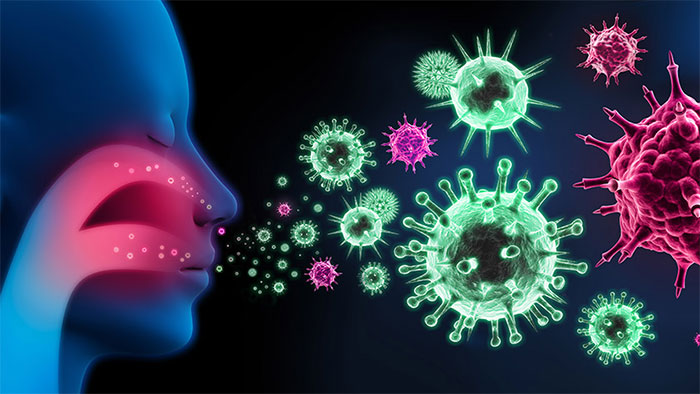How the influenza virus works
To spread in the body, flu viruses first use a protein called Hemagglutinin to bind to receptors of healthy cells.

Influenza viruses rely on a protein to bind to healthy cells.
Once RNA is inserted and replicated, the virus uses an enzyme , Neuraminidase , to cut the connection and move on to the next healthy cell.
Current flu medications prevent the virus from moving to the next cell by stopping the neuraminidase from connecting to the infected cell, or binding it to the infected cell and waiting for the immune system to eliminate it.
A flu drug developed at UBC (University of British Columbia) attaches to the neuraminidase like a broken key, locked in a lock, rendering it useless and has been shown to be effective against resistant strains of influenza virus.
- Published the first study material on the new influenza virus
- Highly virulent H7N9 influenza virus has the potential to cause a pandemic
- The emergence of new avian influenza virus is potentially lethal
- Fish oil can cure the flu
- Influenza A / H1N1 virus does not
- Detection of influenza A / H5N6 virus in animals in Lang Son and Ha Tinh
- Flu viruses can jump up to 2 meters away
- Influenza A virus (H7N9) in China has been highly virulent
- 4-year-old baby carries H7N9 but does not show flu
- Influenza A / H1N1 outbreak in many parts of the world
- The new flu pandemic proves a controversial study
- New virus variants can delete mankind
 Why does steam cause burns worse than boiling water?
Why does steam cause burns worse than boiling water? Lightning-fast octopus is amazing
Lightning-fast octopus is amazing Video: The secret to quickly fold clothes in just 2 seconds for busy people
Video: The secret to quickly fold clothes in just 2 seconds for busy people The eel waving off his head still bites the can of water
The eel waving off his head still bites the can of water Death is not the end: New mathematical models show cells can be revived!
Death is not the end: New mathematical models show cells can be revived!  Breakthrough in human cell mapping project
Breakthrough in human cell mapping project  New research: 'Microplastics promote cancer metastasis'
New research: 'Microplastics promote cancer metastasis'  China released the world's first robot cloned pig
China released the world's first robot cloned pig  Why are there so many germicides but so few anti-virus?
Why are there so many germicides but so few anti-virus?  Instructions to create a notebook with elementary handwriting in Word
Instructions to create a notebook with elementary handwriting in Word 